Learning to jump rope is, by nature, both a trial-and-error game and a process of continuous learning. Practicing a new trick repeatedly until we land it is a tradition in pro jump rope. Hence, repetition and failure are at its core. Beginners too often fall into the same traps that keep them from improving, and so it is important to keep a leveled head and growth-minded when picking up this unique sport.
Figuring out the dynamics and rhythm of jump rope can be quite challenging for beginners. So here are some common mistakes and how to overcome them as jump rope beginners.
Using an unsuitable rope length
You may know that using a jump rope that is too long or too short can be problematic for your jumps. So how exactly can we tell what is the appropriate rope length for us?
Begin by standing on the center (midpoint) of your rope with one foot and raise both handles to one side until they reach your shoulder; not above nor below. This would be the most ideal rope length. Once you get a proper sized rope, you’ll begin to observe your jumping game will improve immensely.
Arms too far apart
Make sure to keep your arms close by your side. If your arms are too far apart, you are technically shortening the length of your rope, making it difficult for each jump and increasing your chances of tripping. Adjust the width of your armspan to an appropriate length that you are comfortable maintaining consistent jumps with.
Shoe options
This is usually not particularly concerning as you are free to wear whatever footwear you feel comfortable in. However, one point to note would be the thickness of the shoes’ soles as well as the exposure of your toes (best to avoid flip-flops). Try to stick to one pair of shoes (designate these as your skipping shoes) so that you are comfortable and get a consistent feeling and contact with the ground.
Timing
Jumping too early or too late? Rope skipping is an incredibly fast paced but also rhythmically controllable sport. While one complete rope turn happens in a matter of just miliseconds, it is a matter of getting the rhythm correct. Have a friend video record you attempt the jumps and rewatch them to figure out what went wrong. If you are able to synchornize your jump rhythm to the cycles, you will feel as if you are one with the rope. You will no longer perceive the rope as an obstacle. Rather, an extension of your body that you can control effortlessly.
Grip and Wrist Position
“Choke down” on the handles as they call it. Having a firm hold close to the handle itself will give you the best control over the rope. This is the foundation of all advanced pro jump rope and will help you tremendously when you begin to learn tricks.
Posture
Keep an upright posture. Not only will you reduce the risks of injury to your back, but a good posture also helps to facilitate proper and undisrupted breathing. Try to imagine that your body is a pencil with someone pulling your tip on top. You will be able to jump longer and improve your overall body posture over time.
Bounce Height
Everyone’s jumping height is different and unique to them. You should try experimenting with the rope and test out which is your most appropriate jump height that you are able to consistently maintain for longer jumping periods. Note that it is not always necessary to jump too high. You may result in adding extra pressure to your joints or losing accuracy and rhythm of your jumps in doing so. The right jump height will train your endurance and ensure your safety.
Not having fun
It can be totally frustrating when you just can’t seem to get the rhythm right. The most important part is just to reflect on what went wrong and work on that. Don’t forget to remind yourself of what went right as well, as these are good encouragers to keep you driven! Try to relax and genuinely experience the rush and joy of this sport. The less self-conscious you are, the easier the sport will become! So just have fun!











